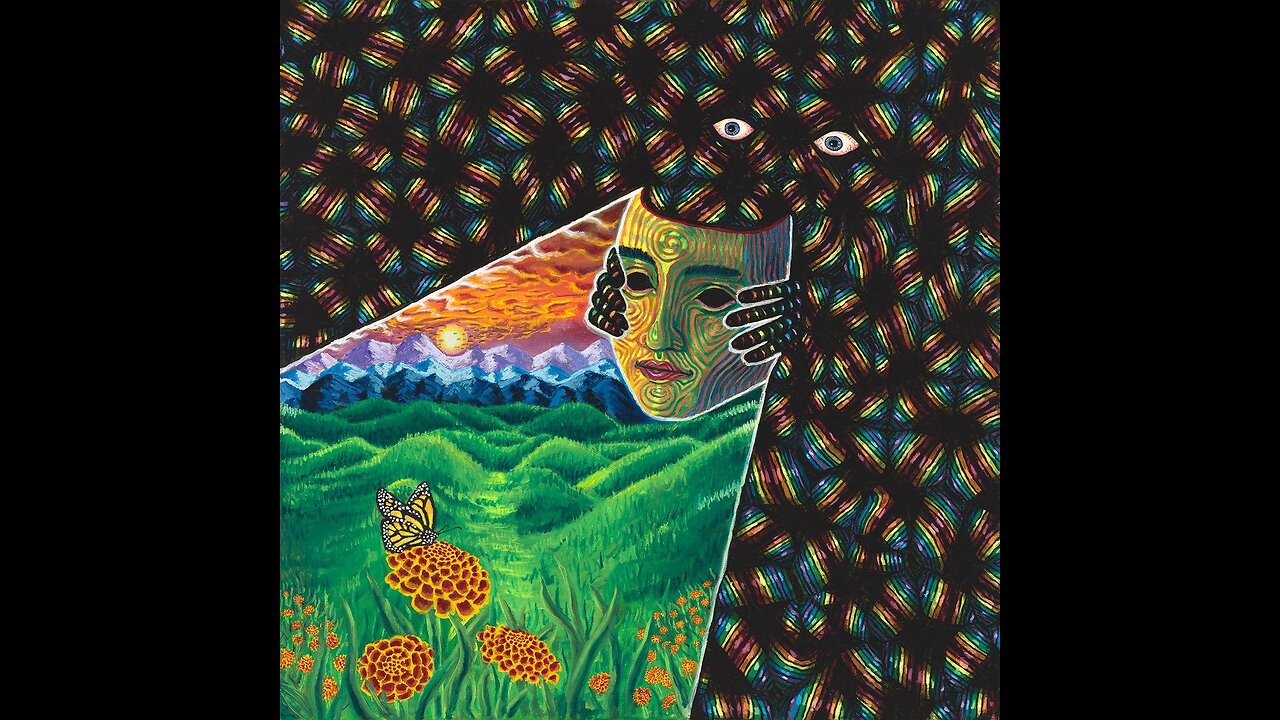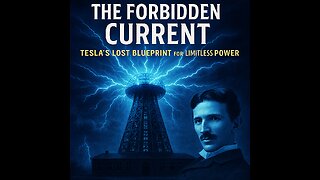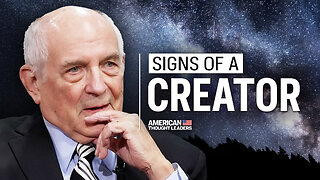Premium Only Content

The Illusion of Identity: Unveiling the Spirit Beyond the Flesh
(A Deeper Exploration of Labels, Perception, and the Unifying Essence Within)
Introduction: The Fallacy of Appearances
We inherit a world brimming with categories: male or female, black or white, rich or poor, Eastern or Western. We internalize these distinctions early, shaping how we see ourselves and interpret the behaviors of others. The conversation that inspires this reflection challenges us to pierce through these outer veils and recognize that the material vessel—our body, with its color and form—is neither the sum nor the substance of who we are. Beneath such surface distinctions lies a unifying spirit, a consciousness that defies the boundaries of race, nationality, or social status.
1. Belief vs. Direct Knowing
1. The Ephemeral Nature of Beliefs
• Beliefs are often placeholders for incomplete understanding. We hold them to fill in the gaps where evidence or lived experience might be lacking. Because beliefs lack that bedrock of indisputable knowledge, they’re fragile, quick to dissolve under pressure.
• When we say “I believe I am X, Y, or Z,” we often express an assumption inherited from family or culture, not necessarily a truth we’ve personally investigated.
2. The Serenity of Knowing
• Genuine knowing arises from profound, sometimes transformative experiences or insights. It carries a sense of certainty that isn’t easily undone by argument or doubt.
• For identity, shifting from “I believe I am only my body/race/status” to “I know I am more than these labels” can be liberating—akin to stepping from darkness into a subtle, ambient light.
Reflection: Ask yourself which aspects of your identity you merely “believe” (perhaps uncritically), and which ones you’ve rigorously questioned, tested, and can firmly say you “know.”
2. A Parable of Water: Unity Within Diversity
1. The Container Illusion
• Visualize three different-colored cans—black, white, yellow. From the outside, they appear distinct, and we might assume the contents differ. However, if each can holds water, tasting reveals a single essence.
• This elegantly underscores how superficial differences—skin color, cultural attire, language—often obscure the deeper substance: the shared consciousness or spirit that animates us all.
2. Transcending Outward Form
• Just as water remains water regardless of its container, the human essence remains universally human despite external variations.
• By focusing on physical contrasts, we risk forgetting that at a fundamental level—our capacity for thought, emotion, awareness, creativity—we resonate with the same universal code.
Reflection: Consider how often we become fixated on the can, ignoring the water within. What relationships or opportunities might we explore if we recognized more readily that the same essence flows through every soul we meet?
3. The Programmed Self: How Identities Take Root
1. Conditioning from Birth
• The moment we enter the world, we’re assigned labels: name, gender, race, nationality, religion. These constructs, though socially meaningful, can become self-fulfilling boundaries.
• Over time, these labels may feel inescapable—“I am X, and that’s it”—but they arise from external forces: family, society, historical legacies.
2. Cultural Reinforcement
• Education, media, social norms—they all echo the idea that these labels are not just descriptors but definers of who we are.
• Ironically, we might pride ourselves on certain labels (patriotism, cultural heritage) while dismissing or even fearing those of others. This fragmentation erodes our sense of interconnection.
Reflection: Pause to trace how identity “scripts” were handed to you. Which ones still serve you, and which might be illusions restricting your sense of possibility or closeness with others?
4. Recognizing the Spirit: A Shift from Body to Essence
1. Body as Temporary Vessel
• Many spiritual philosophies point out that the body is ephemeral. From infancy to old age, its appearance transforms continually. Meanwhile, the deeper witness—call it consciousness or soul—remains constant.
• Identifying solely with the body fosters anxiety: fear of aging, external judgments, and competition. Identifying with spirit, we find a more stable sense of self beyond ephemeral physical changes.
2. Universal Thread of Consciousness
• Multiple spiritual teachings, from Eastern philosophies (e.g., Atman in Vedanta) to Western mystical traditions (e.g., the “divine spark”), remind us that beyond physical difference, the same fundamental awareness animates us.
• Recognizing this shared ground fosters empathy and dissolves barriers, inviting compassion where prejudice might have once thrived.
Reflection: Instead of viewing your body as “who I am,” consider it a marvelous instrument through which consciousness interacts with the world. This shift can awaken a deep sense of liberation.
5. Practical Pathways to Reclaim Identity
1. Question Each Label
• Whenever you find yourself stating “I am [label],” ask: “Is this truly who I am at my core, or is it a costume the world taught me to wear?”
• This inquiry can extend to professional roles, family roles, cultural affiliations—anything that might over-define you.
2. Cultivate Inner Silence
• Meditation or contemplative practice nurtures the direct experience of “I am” beyond adjectives or categories. In this stillness, the mind slows, revealing an underlying unity with all life.
• Such practices can erode the incessant mental chatter that constantly references external validation and identity markers.
3. Celebrate Diversity Without Attachment
• Different backgrounds and experiences enrich humanity. Unity need not dissolve our cultural uniqueness. Rather, it clarifies that these differences are surface-level, not absolute.
• Embrace the beauty of each tradition, language, or worldview while remembering that beneath it all, we share a single, unbroken continuum of being.
Reflection: Set aside moments each day to sense your “I am” presence—free of the tags and stories you typically associate with. Over time, this grounding can transform how you engage with yourself and others.
6. Bridging the Divide: Insights for a Transformed Life
1. From Competition to Cooperation
• The moment you see another’s physical difference, remind yourself: “They, too, are water in a differently colored container.” This subtle mental shift fosters understanding rather than division.
• Imagine the ripple effect if entire communities practiced this approach, moving beyond the illusions of race or class conflicts.
2. Healing Through Recognition
• Much of global strife stems from defending or glorifying body-bound labels. By refocusing on our shared spiritual core, we dissolve the hostility borne of superficial identities.
• This perspective doesn’t eradicate diversity; it transforms it into a mosaic of creative expression rather than a battleground.
Reflection: What changes in your community or family might unfold if people recognized the spirit beyond the flesh? How might conflicts soften or empathy deepen?
7. Conclusion: Embracing Our True Essence
When we look at the swirl of labels—racial, cultural, national—it’s easy to forget that each is a fleeting classification, a social convenience at best. The real revolution in human understanding occurs when we grasp the unified consciousness streaming through these varied forms. By distinguishing belief from direct knowing, by tasting the essence within all “containers,” we glimpse that the differences we cling to are, in truth, illusions.
We are spirit beyond flesh. That is the heart of this teaching. The embodiment of that realization can reshape how we view ourselves, how we treat one another, and how we navigate the complexities of modern life. Far from discarding our individual identities, we can hold them lightly, appreciating their color and texture while remembering that they do not confine us.
Amid the clamor of a label-driven world, we can choose the quiet certainty of unity. In recognizing ourselves as sparks of one flame, we discover, time and again, that beneath the shape and color of the vessel stands an eternal, boundless truth—the spirit that unites us all.
-
 4:36
4:36
FragmentsOfTruth
7 days ago🜏 The Forbidden Current — Tesla’s Lost Blueprint for Limitless Power
382 -
 15:03
15:03
Demons Row
10 hours ago $12.72 earnedThings Real 1%ers Never Do! 💀🏍️
47.4K17 -
 35:27
35:27
megimu32
13 hours agoMEGI + PEPPY LIVE FROM DREAMHACK!
166K14 -
 1:03:23
1:03:23
Tactical Advisor
17 hours agoNew Gun Unboxing | Vault Room Live Stream 044
250K39 -
 19:12
19:12
Robbi On The Record
18 hours ago $22.22 earnedThe Loneliness Epidemic: AN INVESTIGATION
79.9K103 -
 14:45
14:45
Mrgunsngear
1 day ago $140.87 earnedFletcher Rifle Works Texas Flood 30 Caliber 3D Printed Titanium Suppressor Test & Review
137K34 -
 17:17
17:17
Lady Decade
1 day ago $11.74 earnedMortal Kombat Legacy Kollection is Causing Outrage
90.8K22 -
 35:51
35:51
Athlete & Artist Show
1 day ago $14.16 earnedIs Ryan Smith The Best Owner In The NHL?
99.6K16 -
 22:56
22:56
American Thought Leaders
2 days agoCharles Murray: I Thought Religion Was Irrelevant to Me. I Was Wrong.
81K61 -
 36:22
36:22
Brad Owen Poker
19 hours agoGIGANTIC $17,000+ Pot In BOBBY’S ROOM! TRAPPING Top Pro w/FULL HOUSE!! Big Win! Poker Vlog Ep 326
83.9K14